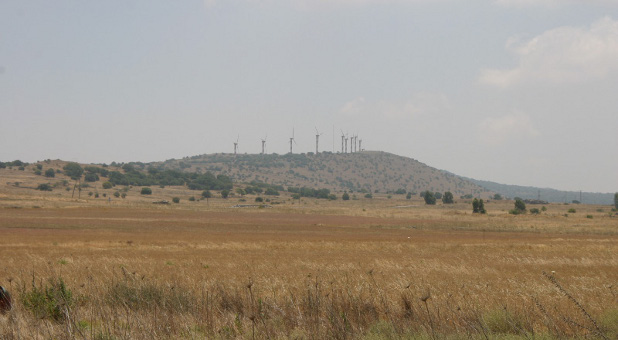Jews Share Legitimate Historical Connection to Israel
Since time immemorial, the Jewish people have had a continuous presence in the land of Israel. Contrary to anti-Israel arguments, the Jewish people were returning to settle the land of Israel hundreds of years prior to the rise of the Zionist movement.
The anti-Israel community often attempts de-legitimize the state of Israel by using the rhetorical argument that the Jewish people left Israel following the Bar Kokhba revolt, were absent from the area for 2,000 years and didn’t return to their ancestral homeland until the rise of the Zionist movement. The reality is that the Jewish people were never absent from the land of Israel, for Jews continued to live in as well as settle the land of Israel despite all of the hardships associated with it since ancient times.
Jews Have Always Lived in Israel
For example, 34 synagogues were found in the Golan Heights dating from the late Roman era up until the Arab conquest. There was also a strong Jewish community present in Ein Gedi that continued to flourish up through the sixth century until Byzantine persecutions brought that community to an end.
Additionally, a Jewish community found in Baram existed up through the Crusader period, and population estimates from the seventh century as well as from 1517 following the Crusades and Black Plague also indicate a Jewish presence in the land of Israel.
The Sephardic Aliyah to Israel
Aside from ancient and medieval Jewish communities that existed within Israel, the Jewish Diaspora never lost touch with their ancestral homeland. Hundreds of years prior to the founding of the Zionist movement, there were Jewish communities that made Aliyah in the Middle Ages.
One of these medieval Aliyot was that of the Sephardic Jewish community that fled Spain following the Spanish and Portuguese Inquisition in order to live under Ottoman rule in the Holy Land. Between 1391 through the 15th century, a significant number of Jews immigrated to the Holy Land as a response to the persecution they endured in Spain and Portugal.
According to the scholar Jane Gerber in her book The Jews of Spain, “Entire family groups banded together and rented ships to make their way to Palestine since they were barred from Christian vessels. This movement contrasted sharply with the previous migration, which involved primarily the scholarly and the elderly who sought burial in the Holy Land. Soon, the Sephardic settlement in Jerusalem increased noticeably, and by mid-century, the community had become so heterogeneous that Hebrew, the only language shared by all, became its spoken language.”
Dona Gracia Nasi
In fact, during the height of the Ottoman Empire, one brave Jewish woman of the Renaissance, Dona Gracia Nasi, sought to set up a semi-autonomous Jewish province in the area of Tiberius, Israel. Despite local Arab and French opposition, Sultan Suleiman the Magnificent supported the project. Many modern historians evidently view Dona Gracia Nasi’s attempt to establish a Jewish province in Tiberius as part of a larger attempt to revive Jewish statehood prior to the rise of Zionism.
According to Andree Aelion Brooks’ The Woman Who Defied Kings: The Life and Times of Dona Gracia Nasi, “In Tiberius, the newcomers were soon taking over abandoned structures, renovating deserted houses, restoring gaping roofs, clearing the rubble and quarreling in typical Jewish fashion. By 1564, the revival was sufficiently far along that yet another traveler recalled that the scent from the date palm, orange and pine trees was so overpowering that it was almost suffocating. Yet another talked effusively of a wilderness turned into a Garden of Eden. Almost all of the residents—one of these travelers noted—were former conversos from Spain and Portugal!”
Although the Tiberius community went into decline after Dona Gracia Nasi passed away, there are some Jews living in Israel today who can trace their residency in the Holy Land back to this Aliyah, known as the Old Yishuv.
For the original article, visit unitedwithisrael.org.














































